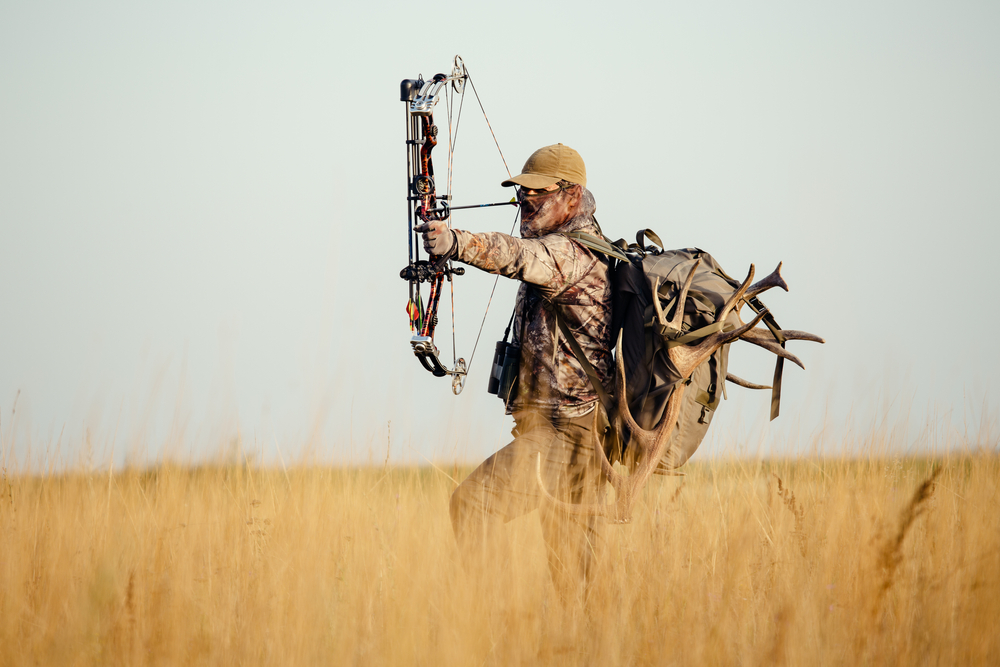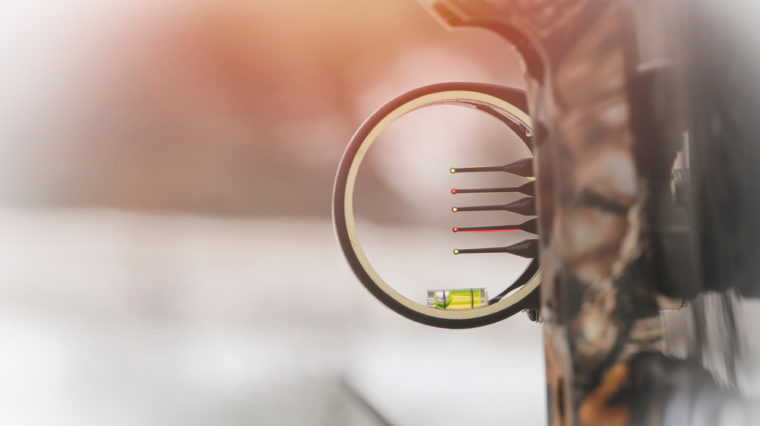Bow hunting for beginners starts with finding a quality bow to start your archery journey. While there are different types of bows such as hunting, target shooting, and longbows, compound bows are the most commonly used. Compound bows are a wise first choice for a beginner, since compound bows can easily equip more accessories to help your shot. Today it’s easier than ever to find a quality starter bow. Bows vary in weight, material, price, and design. At the end of the day, you simply need to make sure you’re comfortable operating the bow. Consider if the draw weight and length is adequate for your size, strength, and skill. You can even find some bows that come packaged with accessories, but we will detail some of these accessories in depth below.
Hunting Compound Bow Accessories You Should Have
Once you’re happy with your bow selection, you will instantly benefit from adding some accessories. Some of these tools you will need before you begin, while some are optional but still helpful if you want to see some success as a beginner. When hunting, every shot counts. One bad shot can chase away any game in the area, ruining the whole day. If you equip yourself correctly, you can feel more confident in the accuracy and precision of every shot you take. We go over some instrumental tools and accessories you should purchase when starting out.
Bow Scope
While your bow is the most important component, some think your bow scope is just as vital. Bow scopes, or bow sights, help mark your shots to help line up a more accurate shot. There are different types of scopes, but the most common are pin sights. Invest in a quality sight so you don’t have to worry about your sights shifting out of place from a simple bump.
Arrow Rest
Rests help the flight of your arrow. There are various types of arrow rests available, but drop away rests tend to be the most popular rest amongst bow hunters.
Arrow Stabilizer
Just as the name suggests, stabilizers help stabilize your bow. Stabilizers come in different sizes and weights, but lots of hunters tend to use shorter stabilizers to allow for more maneuverability. Keep your eyes open for stabilizers that absorb vibrations for extra stability.
Arrow Quiver
You might be familiar with quivers, which essentially serve as a backpack for your arrows. Assuming you are bringing more than one arrow with you, you can bring a quiver with you to store your additional arrows. You can even get quivers that attach directly to your bow for ease of access.
Arrows
You cannot fire a shot without ammo. Arrows are one of your required needs. Arrows come in different materials, and can be adjusted to the size you need. Make sure to start with half a dozen arrows at the minimum, but there certainly is never a limit!
Peep Sight
Bow sights and peep sights let you line up your sight with your target. Archers use peep sights to line up their shot using pins that correspond to various distances based on how far away the target is. Combined with a bow sight, you will see much more consistent and accurate shots using a bow equipped with a peep sight.
Verifiers
When using a sight, at times you may notice the pins appear fuzzy or out of focus. With a verifier, sight pins become clear again! You can view a target much more clearly when combining a verifier with your peep sight, and they can easily be installed in the peep housing. Specialty Archery specializes in manufacturing verifiers, with six different power level options available.
Tips
Arrow tips, or broadheads, give arrows their point. Without them, you wouldn’t be able to take down game while hunting. There’s a lot of debate on what arrow tip material is best, but typically it won’t matter if your shot hits its mark.
Release
Did you know most bow users don’t use their fingers to release the bow string? Many actually use a small tool which helps the archer pull the string back and release the string with the press of a button using either your thumb or your wrist. When starting out, look for the easier-to-use wrist releases unless you prefer to get used to thumb releases from the start.

Finding the Best Place to Hunt
When it comes to bow hunting for beginners, sometimes knowing the best places to hunt will greatly increase your chances of success. Finding areas with attainable targets is the best place to start. Look for areas with large, easier to hit targets like whitetail deer. Start with doing your research and referencing different guides for the best places to bow hunt. Scout the locations for the best place to set up. Since you need to get a lot closer to your target using a bow rather than a gun, you will need to strategically place yourself somewhere where you can maintain a level of stealth. Of course, coming prepared with the right clothing will help with this. If you’re still uncertain where to go, try talking with an expert for some insight.
Hunt with Experienced Hunters
Today there are luckily many resources for novice archers to use. Between online content and local archery shop experts, you should be able to find all the components you need and learn how to properly set up your bow and install all extra accessories. When in doubt, nothing can be more helpful than hunting alongside a more experienced bow hunter. If you don’t know anyone, try finding a local professional guide at the hunting ground of your choice. Although it’s up to you to practice and improve your shot, an expert hunter can help set you up for success, from recommending the right gear and hunting spots to setting up your bow for the most accurate shot possible.
